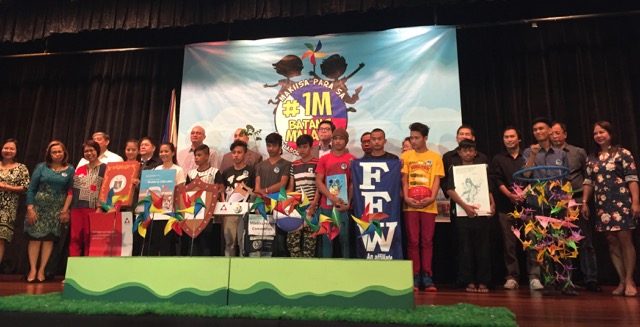SUMMARY
This is AI generated summarization, which may have errors. For context, always refer to the full article.

MANILA, Philippines – The Philippine Statistics Authority (PSA) estimates that there are around 2.1 million Filipino children exposed to hazardous labor, which includes mining.
Among the Sustainable Development Goals (SDGs) set by the United Nations (UN) is to eliminate child labor by 2025. To help achieve this objective in the Philippines, national agencies have teamed up with the International Labor Organization (ILO).
Their campaign #1MBatangMalaya (1 million free kids) aims to intensify the fight against child labor, and add to the gains accomplished since 2012.
“Progress has been made to address child labor in the country.The annual US Department of Labor findings on the worst forms of child labor showed that the Philippines has made significant advancement in efforts to eliminate the worst forms of child labor since 2012 or 4 consecutive years,” said ILO Country Director Khalid Hassan.
“While we are gathered here, children risk their health or even their lives due to child labor. They bend their tiny bodies to carry heavy loads. They expose themselves to hazards and toxic chemicals to earn a few pesos.” (READ: Study: At least 1 in 5 PH households tolerates child labor)
The programs under the campaign will primarily be implemented by the Department of Social Welfare and Development (DSWD), the Department of Labor and Employment (DOLE), the ILO, and environmental group Ban Toxics, with the participation of the Department of Education (DepEd) and the Department of Environment and Natural Resources (DENR).
DSWD and 4Ps
Being at the forefront of upholding children’s welfare, the DSWD will spearhead the establishment of Strategic Helpdesks for Information, Education, Livelihood, and other Developmental Interventions (SHIELD) and the establishment of a new child labor module for its Pantawid Pamilyang Pilipino Program (4Ps) development sessions.
SHIELD aims to strengthen efforts at the local level by creating a help desk and a local registry on child labor that can be used to pinpoint incidence of the crime.
The new 4Ps module, meanwhile, will be integrated in the beneficiaries’ regular family development sessions (FDS). This includes lessons or talks with parents to raise awareness of the ill effects of exposing their children to hard labor.
“Because of widespread and deep-seated poverty in the Philippines, so many children are forced to forego their childhood and become workers in factories, mines, plantations so they can earn pittance wages they can give to their parents. We should all work together to bring an end to child labor and help children recover their childhood,” DSWD Secretary Judy Taguiwalo said.
Children in mining
DOLE, for its part, will seek to eliminate child labor from the mining industry. Mining is considered the worst form of child labor due to the exposure to chemicals and the hazardous environment.
DOLE will work hand in hand with the ILO and Ban Toxics for the CARING-Gold Project.
Funded by the US Department of Labor, the project aims to target the root cause of child labor by gathering information on the ground and developing strategies to improve the lives of families working in artisanal and small-scale gold mining (ASGM).
DOLE Undersecretary Joel Maglungsod said during the launch that there is a need to formalize these small-scale mining operations so that the government may intervene and monitor them.
“Once they are legalized, the government can enter to inspect and implement our labor standards,” he said.
The ILO stressed that the community’s participation is essential to freeing children from the worst forms of labor.
“Child labor is complex and deeply rooted in poverty. Children suffer and risk their health or even their lives to work for their family’s survival. Ending child labor requires strong commitment and collective effort,” said Hassan. – Rappler.com
Add a comment
How does this make you feel?
There are no comments yet. Add your comment to start the conversation.